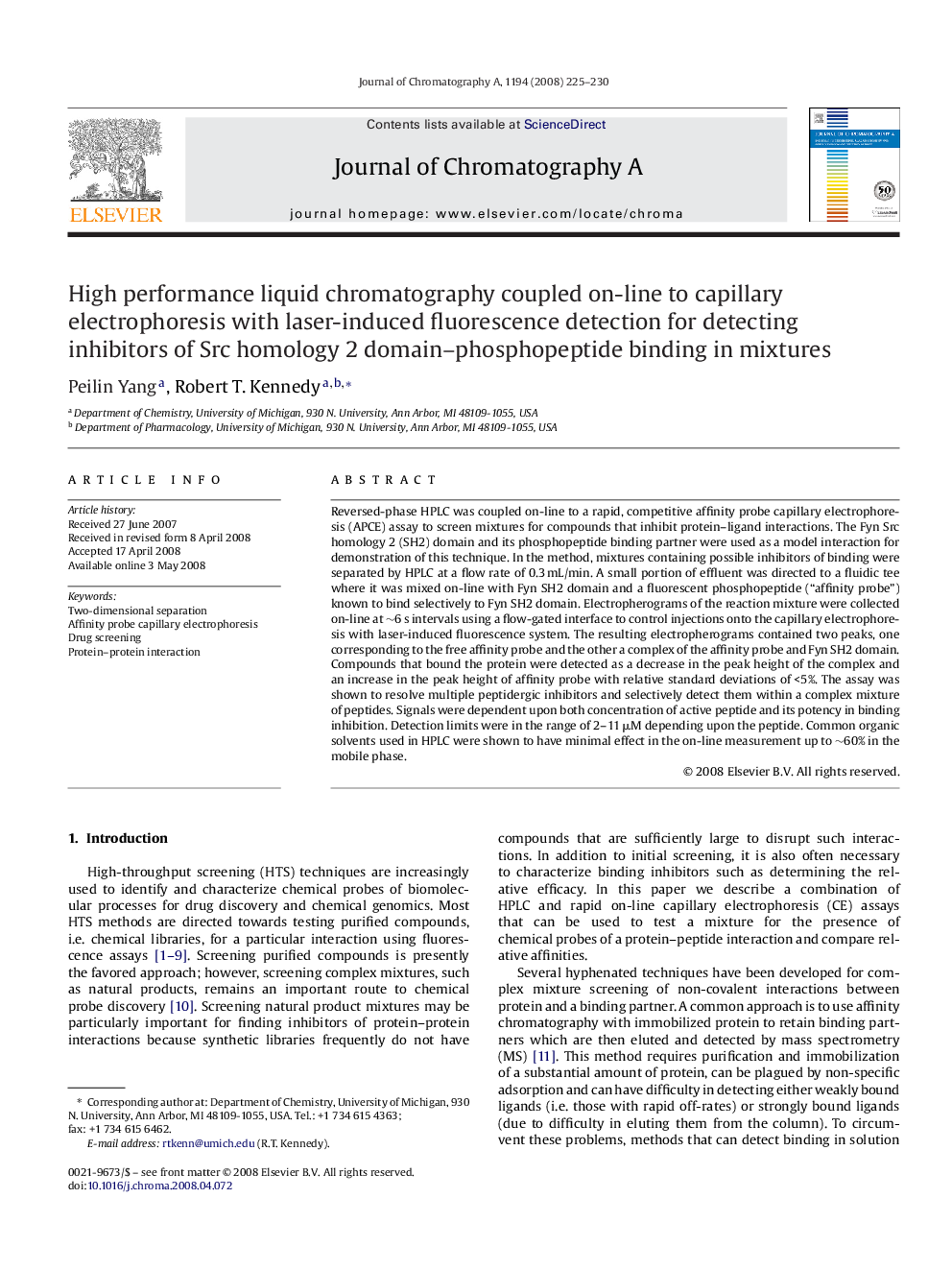| Article ID | Journal | Published Year | Pages | File Type |
|---|---|---|---|---|
| 1205407 | Journal of Chromatography A | 2008 | 6 Pages |
Reversed-phase HPLC was coupled on-line to a rapid, competitive affinity probe capillary electrophoresis (APCE) assay to screen mixtures for compounds that inhibit protein–ligand interactions. The Fyn Src homology 2 (SH2) domain and its phosphopeptide binding partner were used as a model interaction for demonstration of this technique. In the method, mixtures containing possible inhibitors of binding were separated by HPLC at a flow rate of 0.3 mL/min. A small portion of effluent was directed to a fluidic tee where it was mixed on-line with Fyn SH2 domain and a fluorescent phosphopeptide (“affinity probe”) known to bind selectively to Fyn SH2 domain. Electropherograms of the reaction mixture were collected on-line at ∼6 s intervals using a flow-gated interface to control injections onto the capillary electrophoresis with laser-induced fluorescence system. The resulting electropherograms contained two peaks, one corresponding to the free affinity probe and the other a complex of the affinity probe and Fyn SH2 domain. Compounds that bound the protein were detected as a decrease in the peak height of the complex and an increase in the peak height of affinity probe with relative standard deviations of <5%. The assay was shown to resolve multiple peptidergic inhibitors and selectively detect them within a complex mixture of peptides. Signals were dependent upon both concentration of active peptide and its potency in binding inhibition. Detection limits were in the range of 2–11 μM depending upon the peptide. Common organic solvents used in HPLC were shown to have minimal effect in the on-line measurement up to ∼60% in the mobile phase.
